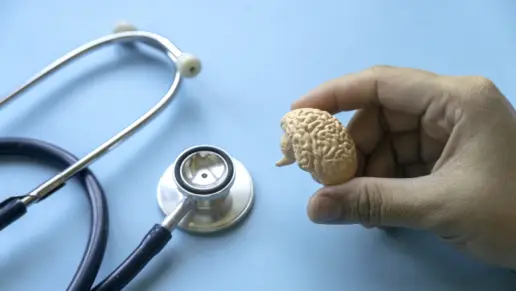- Consequences of the use and misuse of opioid pain medication
- Current trends in treatment of chronic pain
- Avenues for seeking help when prescription painkiller addiction has taken over a life
How Opioids Work
Opioids affect the communication circuits between the brain and nervous systems through which the spinal cord controls the functioning of all parts of the body, such as breathing and heart rate. Opioids block pain signals in the brain and cause the release of large amounts of dopamine, which fools the body into feeling pleasure instead of pain.Opioid Dependence and Addiction
The opioid stimulation of reward and pleasure centers in the brain creates dependence because pain becomes associated with pleasure. As the neurobiology in the brain becomes conditioned to the pleasure stimulation, long-term memory stores the responses, resulting in the craving for more positive experiences. This is when dependence occurs. Evidence suggests that addiction begins with the sedation and/or deterioration of protective mechanisms in the central nervous system, which normally provide appropriate responses to danger. The primary symptom of addiction is the continued engagement in high-risk behavior when the consequences are severe enough to warrant protective actions of fight, flight, or freeze.4 However, addiction is defined as the helplessness of being able to change high-risk behavior driving the pursuit of the pleasure in spite of severe consequences. In other words, dependence is when the body requires the medication for relief. Addiction is the helpless pursuit of opiates to avoid the discomfort of withdrawal at increased peril to life.How Opioids Build Tolerance
Tolerance is the need for a higher dosage of opioid medication to produce the same result as the lower dosage. This occurs after extending the use of prescription drugs beyond indicated time frames or dosage recommendations. When used longer than 10 to 14 days, the brain receptors become numb and no longer respond the same way they initially did to the medication. Tolerance also is indicated by a hypersensitivity to pain which develops, requiring a higher dosage to obtain similar results as initially experienced. This is the main cause of overdose, poisoning, and death by prescription drugs. The prescribed amount does not produce the required effect, and therefore more and more medication must be taken until toxicity builds and the respiratory system shuts down.Withdrawal Symptoms and Treatment
The discomfort of withdrawal from opiates is the main motivation for people to continue using illicit medications after a legitimate prescription has ended. Withdrawal can be life threatening and, over a three day period, is very uncomfortable. During the first several hours of withdrawal, patients report feeling exacerbated pain, crying, insomnia, sweats, nausea, vomiting, muscle cramps, excessive anxiety, restlessness, depression, flu-like symptoms of headache and fever, and intense cravings. After 72 hours the symptom intensity will decrease, but cravings can continue for years.2 Opioids are the most difficult drug to withdraw and stay clean from once addiction has occurred. Medical providers have used buprenorphine (Suboxone) as a slow taper to ease symptoms of withdrawal. Naltrexone (Vivitrol) is a once a month extended release shot of an opioid antagonist that prevents receptors in the brain from recognizing opioids and prevents effective euphoria. This is similar to varenicline (Chantix) for nicotine addiction. Using the combination of Suboxone as a slow taper for the first six weeks and then Vivitrol after the initial detox appears to be more effective than using either of these medications separately for withdrawal and longer term sobriety.5Using Opioids Safely
Pain medication used over a limited period of time may not cause dependence, addiction, or tolerance build up. The CDC provides guidelines for prescribing opioids for chronic pain that practitioners must follow. Patients are also responsible for communicating with their providers regarding chronic pain treatment options and the length of their pain management plan. Nonopioid treatments are also available, such as physical therapy. Chronic pain management classes are available that can teach a patient methods of reducing pain without medication. These courses are generally short term, provide exercises to build tolerance to pain, and help participants build a support system with other chronic pain patients. Finally, as with all medications it is imperative a patient take their medication only as prescribed by their doctor. Taking too much will increase tolerance and build dependence. Taking other people’s medication is also dangerous because the dosage may not be accurate and can cause overdose. There are alternative opioid medications such as methadone that patients can take for long term relief without developing dependence. Methadone has been used for decades as an alternative to opioid dependence and addiction. The extended life of methadone reduces the frequency of dosage thus reducing the possibility of dependence while also providing long term relief of chronic pain. Medication assisted treatment (MAT) centers can provide methadone treatment along with psychotherapeutic interventions in chronic pain or chronic addiction patients.Getting Help
Multiple resources exist if you or someone you know is struggling with opioid dependence or prescription painkillers addiction. SAMHSA has a bilingual national hotline that operates 24/7, 365 days a year for treatment referral, at 1-800-662-HELP (4357) or TTY 1800-487-4889. When exploring treatment centers, many people also need to understand how their insurance coverage works. You can learn more about rehab options to see how different insurance plans may help pay for addiction treatment and what levels of care may be covered. To find rehab treatment, many websites also provide lists of facilities by location. These treatment programs offer the crucial support and guidance you or your loved one needs for recovery. You can also learn more about rehab options to compare programs and explore facilities that match your needs.References
- (2022) National Drug Control Strategy,https://www.whitehouse.gov/wp-content/uploads/2022/04/National-Drug-Control-2022Strategy.pdf, pg. 6.
- (2023). Case-Lo, C. Withdrawing from Opiates and Opioids. HealthLine.Com.https://www.healthline.com/health/opiate-withdrawal#opioid-effects.
- (2022). Dowell D, Ragan KR, Jones CM, Baldwin GT, Chou R. CDC Clinical Practice Guideline for Prescribing Opioids for Pain — United States, 2022. MMWR Recomm Rep 2022;71(No. RR-3):1–95. DOI: http://dx.doi.org/10.15585/mmwr.rr7103a1.
- (2002). Kosten TR, George TP. The neurobiology of opioid dependence: implications for treatment. Science Practitioners’ Perspective July 1(1):13-20 DOI:10.1151/spp021113. PMID: 18567959; PMCID: PMC285105. https://www.ncbi.nlm.nih.gov/pmc/articles/PMC2851054/.
- (2017) Lee, J.D., Nunes, E.V., Novo, P., Bachrach, K., Bailey, G.L., Bhatt, S., & King, J. Comparative effectiveness of extended-release naltrexone versus buprenorphine-naloxone for opioid relapse prevention: a multicenter, open label, randomized controlled trial. The Lancet as reported at the Recovery Research Institute.org https://www.recoveryanswers.org/research-post/suboxone-vs-vivitrol-head-head-comparison/
- (2014). National Institutes of Health, Executive Summary, September 29-30. The Role of Opioids in the Treatment of Chronic Pain.https://prevention.nih.gov/sites/default/files/documents/programs/p2p/ODPPainPanelStatementFinal_10-02-14.pdf.



